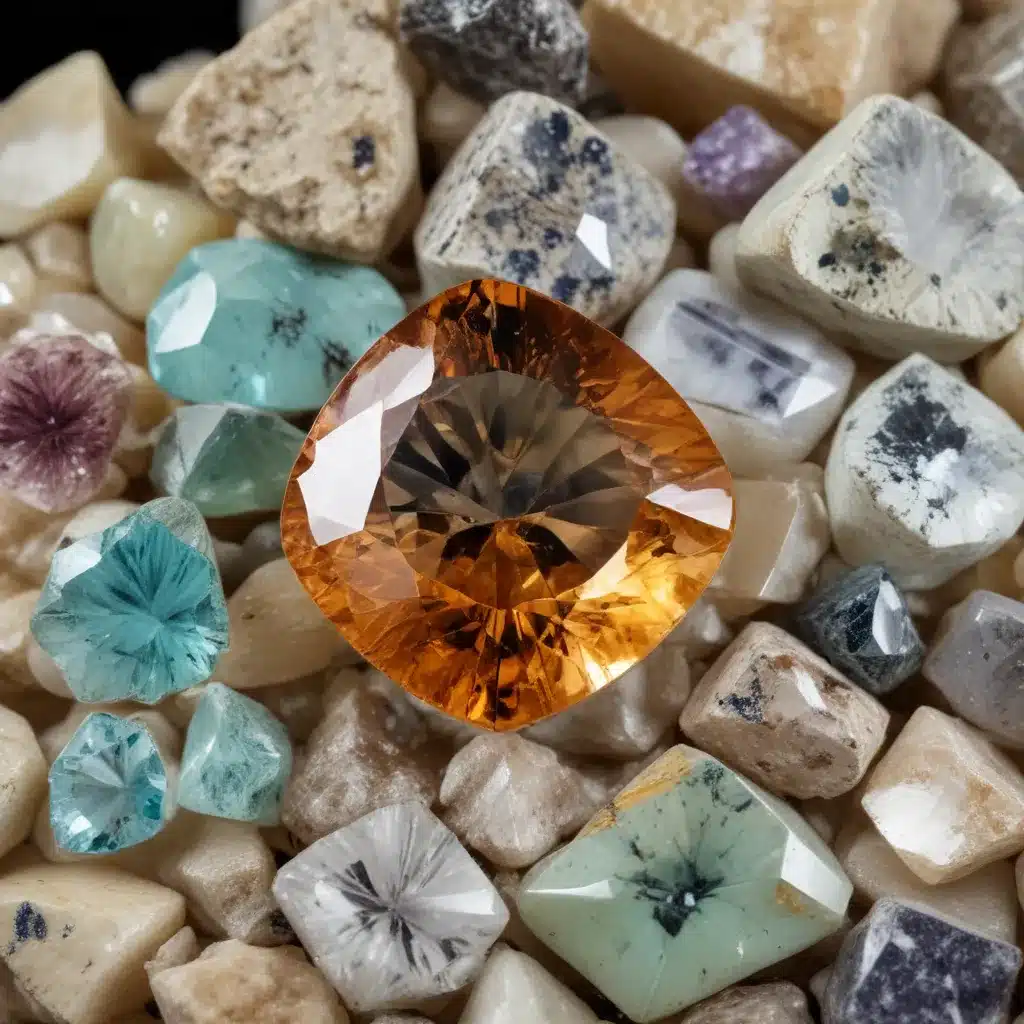
Gemstones are not merely polished crystals—they are time capsules, preserving the secrets of their formation deep within the Earth. These natural wonders often contain tiny features known as inclusions, which hold the key to understanding the geological processes that created them.
Far from being mere imperfections, gemstone inclusions are like a gemstone’s personal diary, offering a glimpse into the unique conditions that shaped each precious stone. Whether they appear as delicate needles, shimmering bubbles, or striking mineral deposits, these internal features tell captivating stories about a gem’s origins and journey.
The Fascinating World of Gemstone Inclusions
Imagine gazing into the depths of a ruby or sapphire and noticing intricate patterns or specks trapped inside. These are inclusions—naturally occurring materials like minerals, liquids, or gases that became encased within the gem as it formed deep underground. Rather than blemishing the stone, inclusions are a testament to its natural origins, showcasing the incredible forces at work during its creation.
Gemstones develop under extreme heat and pressure, growing from mineral-rich fluids or molten rock. As the crystals form, they may capture tiny particles of other minerals, droplets of liquid, or pockets of gas present in their surroundings. These trapped substances become the inclusions that give each gemstone its own distinctive character.
Types of Gemstone Inclusions
Gemstone inclusions come in a wide variety of forms, each offering a unique window into the gem’s past. Let’s explore the main categories of these fascinating internal features:
Solid Inclusions
Solid inclusions are bits of other minerals that became trapped within the growing gemstone crystal. These could be anything from tiny diamond crystals in a diamond to delicate rutile needles in a sapphire. Solid inclusions often create mesmerizing patterns, enhancing the gem’s visual appeal.
Fluid Inclusions
Fluid inclusions are microscopic pockets of liquid or gas that were sealed inside the gemstone during its formation. These inclusions can contain ancient water, petroleum, or even bubbles of gas. In some cases, the trapped fluids can even move around when the gem is tilted, like a miniature ocean trapped in crystal.
Growth Features
Certain inclusions are the result of the gemstone’s growth process. For example, halos are disc-shaped cracks that form when zircon crystals grow within another gemstone, like sapphire or garnet. Feathers are delicate, feather-like fissures that develop as the gem crystallizes.
The Significance of Gemstone Inclusions
Far from being mere imperfections, gemstone inclusions are a treasure trove of information, revealing the hidden stories behind each precious stone. By studying these internal features, gemologists and scientists can gain valuable insights into the geological conditions that formed the gem, as well as its geographic origin.
Aesthetic Appeal
Inclusions can also enhance the beauty and uniqueness of a gemstone. Some create captivating optical effects, like the asterism (star-like pattern) seen in star rubies and star sapphires, or the chatoyancy (cat’s eye) effect in chrysoberyl. Rather than detracting from a gem’s value, these inclusions are often highly prized by collectors and enthusiasts.
Authenticity and Identification
Inclusions are also crucial for distinguishing natural gemstones from their synthetic counterparts. Each type of inclusion has a distinct “fingerprint” that can help gemologists identify the stone’s origin and whether it has been treated or enhanced. This knowledge is essential for ensuring the authenticity and value of a gemstone.
Uncovering the Secrets Within
To fully appreciate the stories hidden within gemstones, gemologists employ a range of specialized tools and techniques. Loupes and microscopes allow them to closely examine inclusions, revealing details that are invisible to the naked eye. Advanced methods like spectroscopy and X-ray imaging can provide even deeper insights into the composition and structure of these internal features.
By studying inclusions, gemologists can not only identify the type of gemstone but also gain valuable information about its formation, geographic origin, and potential treatments. This knowledge is crucial for determining a gem’s value and ensuring its authenticity.
Caring for Included Gemstones
Gemstones with inclusions require special care and consideration. The internal features that make them unique can also make them more delicate, so it’s important to avoid exposing them to extreme temperatures, harsh chemicals, or sudden impacts. Gentle cleaning with mild soap and lukewarm water is usually the best approach.
When setting included gemstones in jewelry, it’s important to choose a protective setting, such as a bezel or halo design, to shield the stone from potential damage. Consulting with a professional jeweler can help ensure that the gem’s beauty is showcased while its unique inclusions are safeguarded.
Embracing the Uniqueness of Gemstone Inclusions
As we’ve explored, gemstone inclusions are far more than mere imperfections. These tiny features are like windows into the Earth’s deep history, capturing the incredible geological processes that formed each precious stone. By embracing the individuality and character that inclusions bring, we can develop a deeper appreciation for the natural wonders that adorn our jewelry and delight our senses.
Whether it’s the shimmering silk in a ruby, the mesmerizing cat’s eye in a chrysoberyl, or the striking patterns in an emerald, gemstone inclusions are a testament to the incredible beauty and complexity of the natural world. By understanding and celebrating these hidden stories, we can truly appreciate the unique journey of each gemstone, from its birth deep within the Earth to the cherished piece of jewelry it becomes.
To explore more about the world of gemstones and jewelry, visit Shelby Gem Factory. Their experts are passionate about uncovering the secrets hidden within every precious stone, and they’re eager to share their knowledge with gem enthusiasts like yourself.

